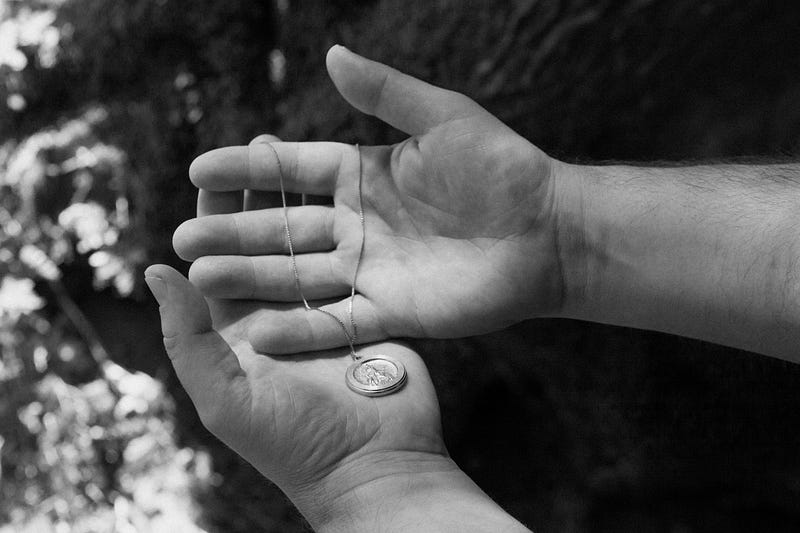Hey Jude

My experience with loss and how I learned to cope with it.
Story by Chris O’Neill
“You look gorgeous Mommom!”
My compliments were immediately rewarded with a smile from my grandmother that must have been tough to muster. A pang of guilt hit me in the gut as I came to grips with how frail she looked.
“If I could give you $100,000 right now, could you just keep everybody out of my room for me tomorrow?” she asked. I found myself looking for the appropriate words to comfort her, but all I could stammer out was a half-hearted, “It’s going to be OK Mommom.”
It all happened so fast. What started as minor neck pain turned out to be cancerous in origin. We knew Mommom was tired, but she was fine, at least that’s what she told us. Tests later revealed her lung cancer had returned and this time it spread faster.
As I sat by her side, a heightened sense of awareness slowed time to an ache while Mommom lay gasping for air.
I Googled lung cancer, as if expecting to find some miracle cure, before sliding my phone back into my pocket, chastising myself for not being present in the moment. Feeling helpless, all I could do was gently stroke her hair.
Mommom passed away early on the morning of July 16, 2020, finally succumbing to her battle with cancer at 84 years old. Pandemic restrictions wouldn’t allow for a viewing, so a graveside service was all we could work out. Pastor O’Neill, my father, would preside over the funeral.
It was a misty morning and the funeral grounds were green with life. We gathered around Mommom’s final resting place while following social distancing precautions. More than once I caught the longing eye of a relative in need of a hug, but all we could do was exchange a painful smile instead.
“My mother would always leave an empty chair at her table,” my father began, fighting back tears while delivering Mommom’s eulogy. “If you asked her why, she would tell you, ‘That’s for an unexpected visitor.’” A palpable sadness washed over the crowd as we remembered Mommom’s kindness and hospitality.
After the funeral, my aunt urged me to see if there was a keepsake I wanted out of Mommom’s belongings. A small, gold pendant caught my eye.
“Which saint is this?” I asked my aunt, not particularly religious myself. She paused somberly before replying, “He’s the patron saint of lost causes.”

St. Jude is his name, a saint known for championing those facing insurmountable odds. The irony didn’t escape me, but for some reason it felt right.
In the days that followed, I retreated inward. I felt frozen in place while the world carried on.
I was depressed, socially unavailable and my grades suffered. It felt like all motivation had been drained from me the morning Mommom stopped breathing.
It took months to finally look at the pendant she once owned. An irrational thought process led me to believe that gazing upon it would somehow make Mommom’s death real. But when I finally took it from my top dresser drawer, it wasn’t pain I found, but rather comfort.
I attached the pendant to a silver chain and hung it from the rearview mirror of my car. It became routine for me to greet it whenever I ran errands. “Hey Jude,” I would say as a joking reference to the Beatles’ song.
It wasn’t long before I began to unburden myself to the pendant, as if it provided a mystical connection to my grandmother. I apologized for not doing more while she was alive and forgave myself for doing all I could.
The routine made the grief bearable again, and it wasn’t long before I finally felt myself slowly moving on. Wondering how common my experience was, I consulted Bellingham, Washington psychologist Richard Spitzer for his opinion on grief and loss.
“I can’t express enough how individual grieving is,” Spitzer said. “There’s no normal way or normal amount of time, it’s just something that people have to find for themselves.”
When I mentioned my experience with the St. Jude pendant, Spitzer didn’t seem surprised.

“Anything that helps with grief, like a keepsake, is important,” Spitzer said. “Some keepsakes can be extremely comforting and provide an attachment that can go on.”
We’ve all suffered losses this past year, whether they came in economic, emotional or human forms. If you find yourself feeling stuck in the same position I did, don’t worry, you are not alone.
Every morning on my drive to get coffee, a flicker of gold catches my eye as daylight strikes the pendant. It serves as my reminder that it’s OK to move forward while remembering those I cherish. I only hope you can do the same and encourage you to find peace in your own way.
